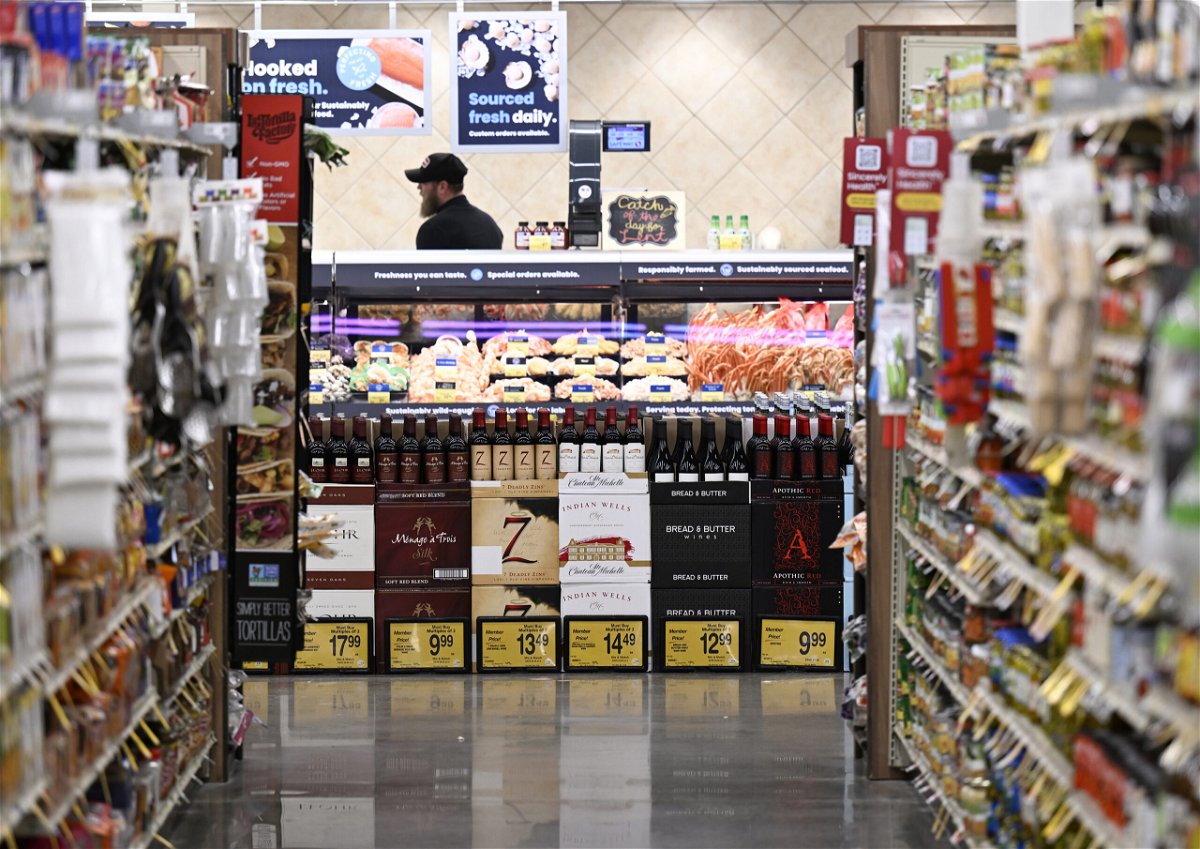Inflation fell for the eighth-straight month in February

Inflation fell for the eighth-straight month in February
By Alicia Wallace, CNN
Inflation’s temperature came down a little bit more last month, but the Federal Reserve’s campaign to bring down high prices has grown even more complex in recent days.
The Consumer Price Index, a closely watched gauge of inflation, showed that annual price increases continued to slow in February, the Bureau of Labor Statistics reported on Tuesday.
CPI measured 6% for the year ended in February, down from January’s 6.4% and in line with economists’ expectations.
It’s the eighth consecutive month that the annual rate has declined and marks the lowest level since September 2021.
“Inflation has peaked, but it hasn’t gone into hibernation,” said Mark Hamrick, senior economic analyst for Bankrate.
On a monthly basis, prices were up 0.4%, representing a cooldown from the January monthly growth rate of 0.5%. Economists were expecting a gain of 0.4%.
“Most people are going to be encouraged to see the number continue to trend down,” Emily Reasor, senior partner with McKinsey & Company, said in an interview with CNN. “This is going to still take a while to return to numbers that we’re all comfortable with. We’re going to have, certainly this year, to still deal with higher inflation numbers than most consumers are comfortable with or used to.”
What’s in the report
Shelter prices were the largest contributor to the monthly increase, accounting for 70% of February’s gain, according to the BLS. Shelter prices were up 0.8% for the month and 8.1% year over year.
Food prices continued to cool. Overall food prices were up 9.5% for the 12 months ending in February, representing the lowest annual rate for the category since April. Prices for food at home (grocery purchases) were up 10.2% in February, the lowest since March 2022.
When stripping out volatile energy and food prices, core CPI grew 0.5% on a monthly basis and 5.5% year over year. While the annual core CPI inched down 0.1 percentage points, the monthly core measurement accelerated from a 0.4% growth rate seen in January.
Some of the categories with notable monthly declines included eggs (down 6.7%), used vehicles (down 2.8%), utility gas service (down 8%) and fuel oil (down 7.9%).
Services inflation — a key area of focus for the Federal Reserve as it seeks to gauge how “sticky” inflation is becoming — ticked up 0.1 percentage points to 0.8% for the month. It’s up 8.1% year over year.
“Services inflation is still hot; the Fed still has work to do, and their actions and communications are going to come under increasing scrutiny given the events of the past few days,” said Andrew Patterson, senior international economist for Vanguard, citing recent stress in the banking sector. “They need to be careful in balancing the risks of price and financial stability.”
What it means for the Fed
CPI is one of the last major pieces of economic data to be released before the Fed’s policymaking meeting next week.
However, the Fed’s fight against inflation has grown more complex in recent days.
Following the collapse of Silicon Valley Bank, Signature Bank and Silvergate, the Fed stepped in alongside Treasury and the Federal Deposit Insurance Corporation to attempt to stem broader fallout.
Despite some broader declines, Tuesday’s CPI report shows that it may take longer for the inflation rate to reach the Fed’s desired 2% target, wrote Sinem Buber, lead economist at ZipRecruiter.
“Coming on the heels of last Friday’s strong jobs report and Fed Chair [Jerome] Powell’s semiannual report to Congress, today’s acceleration in core inflation would almost certainly push the Fed to raise rates by [a half-point] on March 22 were it not for recent instability in the banking system,” Buber wrote.
“Now, the Fed is in a bind. On the one hand, it wants to maintain credibility on inflation and avoid core inflation accelerating further. On the other, it needs time to investigate the effect of recent bank collapses on financial conditions and wants to minimize the risk of further financial instability,” according to Buber.
What it means for consumers
Any choppiness in the banking sector also presents risks for consumers who on average entered 2023 with relatively strong balance sheets but feel shaky about the economy, said McKinsey’s Reasor.
“I think, at a minimum, it is one more thing to create a cloudy consumer outlook or just general discomfort with what we’ve got ahead of us this year,” she said.
Consumer spending has held up despite high inflation and started out the year strong; however, that activity is expected to peter out in the coming months.
On Wednesday, the Commerce Department will release retail sales data for February. Economists are expecting monthly sales to shrink 0.3% from January, which would be a sharp about-face from a 3% surge in January.
The-CNN-Wire
™ & © 2023 Cable News Network, Inc., a Warner Bros. Discovery Company. All rights reserved.